Business VPN Guide: Securing Mobile Sales Teams Beyond Office Networks
Published: September 2025 | Last updated: September 2025
Your office network provides solid security protection through enterprise-grade firewalls, threat management, and access controls. However, when your sales representatives visit client sites, field technicians work at customer locations, or consultants travel between projects, they operate entirely outside your network's protection. This creates security challenges that traditional office-focused security measures cannot address.
Mobile workforce security requires different approaches than fixed office environments. Unlike office networks, where you control the infrastructure, mobile employees connect to public WiFi networks at hotels, coffee shops, client offices, and airports. They access business data from devices that move between trusted and untrusted environments daily. Network security protocols designed for fixed locations provide limited protection for these dynamic work scenarios.
The challenge extends beyond network connectivity. Mobile workers need secure access to company passwords, protect client data during off-site meetings, and require reliable communication tools that maintain security across various network conditions. Traditional VPN solutions often prove inadequate for mobile use, creating connectivity issues that lead employees to disable security measures entirely. Understanding how mobile protection fits within your broader cybersecurity framework is essential for organizations implementing comprehensive security strategies.
This guide addresses the complete mobile workforce security challenge. We examine threats specific to mobile employees, evaluate protection strategies that support rather than hinder productivity, and provide implementation frameworks for organizations ranging from five-person consulting firms to 50-employee sales organizations. The recommendations focus on practical solutions that enhance rather than complicate daily workflows.
Key Takeaway: Mobile workforce security requires dedicated tools and strategies beyond office network protection. Organizations with traveling employees need multi-layered security combining secure connectivity, credential management, device protection, and data security measures specifically designed for mobile use cases.
Table of Contents
- 1 Quick Reference: Mobile Security Implementation Checklist
- 2 Understanding Mobile Workforce Security Risks
- 3 Core Mobile Security Architecture
- 4 Business VPN Solutions for Mobile Teams
- 5 Credential Management for Distributed Teams
- 6 Device Protection and Mobile Device Management
- 7 Data Protection Strategies for Mobile Teams
- 8 Communication Security for Mobile Workers
- 9 Implementation Framework and Best Practices
- 10 Tools and Resource Hub
- 11 Frequently Asked Questions
- 11.0.1 How does mobile security integrate with existing office network security?
- 11.0.2 What happens if mobile workers forget their security credentials or lose access?
- 11.0.3 Can mobile security solutions work with bring-your-own-device (BYOD) policies?
- 11.0.4 How do mobile security measures affect device performance and battery life?
- 11.0.5 How does mobile workforce security support compliance requirements?
- 12 Next Steps and Implementation
Quick Reference: Mobile Security Implementation Checklist
Essential Mobile Security Components
| Security Layer | Solution Type | Implementation Priority |
|---|---|---|
| Business VPN | Enterprise VPN with threat protection | ⭐⭐⭐⭐⭐ Immediate |
| Credential Management | Business password manager | ⭐⭐⭐⭐⭐ Immediate |
| Device Protection | Endpoint security with mobile management | ⭐⭐⭐⭐☆ Week 1 |
| Data Protection | Cloud backup with mobile sync | ⭐⭐⭐⭐☆ Week 2 |
| Communication Security | Encrypted messaging and email | ⭐⭐⭐☆☆ Month 1 |
Mobile Security Budget Planning by Team Size
5-10 Mobile Employees:
- Core security stack: $19-25 per user monthly
- Essential tools: Business VPN, password manager, basic endpoint protection
- Minimum commitment: Most business VPN solutions require 5-user minimum
11-25 Mobile Employees:
- Enhanced security: $25-40 per user monthly
- Added features: Advanced threat protection, mobile device management
26+ Mobile Employees:
- Enterprise security: $35-55 per user monthly
- Full protection: Zero-trust access, advanced analytics, dedicated support
Implementation Timeline
- Week 1: Deploy business VPN and credential management
- Week 2: Implement device protection and data backup
- Month 1: Add communication security and user training
- Month 2: Optimize performance and establish monitoring procedures
Understanding Mobile Workforce Security Risks
The Trust Boundary Challenge
Traditional network security operates on perimeter-based models where trusted internal networks connect to untrusted external networks through controlled gateways. Mobile employees work outside these clear boundaries. A sales representative's laptop might connect to your secure office network in the morning, a client's potentially compromised network during afternoon meetings, and an unsecured hotel WiFi network in the evening.
This boundary shift creates multiple attack vectors. Public WiFi networks often lack encryption, allowing nearby attackers to intercept network traffic. Client networks may have inadequate security controls, potentially exposing mobile devices to malware or unauthorized access attempts. Hotel and conference center networks frequently have minimal security monitoring, making them attractive targets for cybercriminals seeking business data.
The mobility aspect compounds these risks. Static office environments allow for consistent security monitoring and quick incident response. Mobile devices operate independently for hours or days between office connections, potentially harboring threats that traditional network security tools cannot detect until the device returns to the corporate network. For organizations seeking comprehensive protection strategies, our cybersecurity software guide provides additional context on layered security approaches.
Credential Security in Mobile Environments
Password security becomes more complex for mobile workers. While away from the office, sales representatives frequently need access to multiple client portals, CRM systems, and communication platforms. The tendency to reuse passwords or store credentials insecurely increases when employees must remember numerous login details during high-pressure client meetings.
Traditional password managers designed for single-location use often struggle with mobile scenarios. Synchronization delays can leave employees without access to updated credentials. Network connectivity issues may prevent password manager access precisely when employees need critical login information. These practical challenges lead to workarounds that compromise security.
The problem extends beyond individual credentials. Mobile employees often require access to shared company accounts for social media, vendor portals, and client communication systems. Managing these shared credentials across a distributed workforce requires approaches that maintain both security and accessibility.
Data Protection Challenges
Mobile devices face higher physical security risks than office equipment. Laptops can be stolen from vehicles, hotel rooms, or conference centers, while tablets and smartphones are easily misplaced or left behind during travel. Traditional physical security measures like locked office doors and security cameras do not protect mobile devices.
Data synchronization creates additional vulnerabilities. Mobile employees need access to current client information, project files, and communication history. However, storing business data locally on mobile devices increases exposure risks. Cloud synchronization solutions must balance accessibility requirements with data protection needs.
Client site visits introduce unique data exposure scenarios. Sales presentations may contain pricing information or competitive intelligence. Technical consultations might require access to proprietary methodologies or client-specific configurations. These materials need protection not only during transit but also while being actively used in potentially insecure environments.
Core Mobile Security Architecture
Layered Protection Strategy
Effective mobile workforce security requires multiple protection layers that function independently while providing overlapping coverage. Unlike office networks, where a single security appliance can protect all users, mobile security must embed protection capabilities within each device and access method.
The foundation layer focuses on secure connectivity through business VPN solutions. Mobile devices must establish encrypted connections to business resources regardless of the underlying network infrastructure. This protection must function transparently across various connection types, from cellular networks to public WiFi, while maintaining consistent security policies.
The access control layer manages authentication and authorization for business resources. This includes initial login procedures and ongoing verification that only authorized users can access specific information. The system must accommodate the dynamic nature of mobile work, where employees might need emergency access to critical resources outside regular business hours or network conditions.
Data protection forms the third critical layer. This encompasses both data in transit and data at rest on mobile devices. Protection must extend to local file storage, cloud synchronization, and any temporary files created during mobile work sessions. The challenge lies in maintaining this protection without significantly impacting device performance or user experience.
Zero-Trust Principles for Mobile Teams
Zero-trust security models align naturally with mobile workforce requirements. Rather than relying on network perimeter security, zero-trust approaches verify every access request regardless of the user's location or connection method. This philosophy addresses the fundamental challenge of mobile work: the inability to establish trusted network boundaries.
Implementation begins with device verification. Each mobile device must be uniquely identified and validated before accessing business resources. This verification should occur continuously rather than only during initial setup, ensuring that compromised devices cannot maintain access to sensitive information.
User authentication extends beyond simple password verification. Modern mobile devices offer biometric authentication options that provide stronger security than traditional passwords while improving user experience. Multi-factor authentication becomes essential, particularly for accessing high-value business systems or sensitive client data.
Application-level security controls the final access layer. Rather than granting broad network access, zero-trust models provide specific application permissions based on user roles and current context. For example, a sales representative might access CRM systems and presentation materials but not financial systems or technical documentation.
Business VPN Solutions for Mobile Teams
Enterprise VPN Requirements and Implementation
Traditional VPN solutions designed for occasional remote access often prove inadequate for full-time mobile workers. Consumer VPN services lack the management features, security controls, and performance optimization required for business use. Mobile-specific VPN solutions must address connectivity reliability, performance across varying network conditions, and centralized management capabilities.
For small teams (under 5 employees) or organizations testing mobile security approaches, NordVPN Teams provides business-grade protection with dedicated IP options and team management features. This solution bridges the gap between consumer VPN services and full enterprise platforms, offering advanced security features without minimum user commitments. Current pricing starts at $3.99 per user monthly for Plus plans.
For established mobile workforces requiring comprehensive protection, NordLayer provides enterprise-grade security specifically designed for distributed teams. The platform combines traditional VPN functionality with Zero Trust Network Access (which verifies every device and user before granting access), cloud firewall capabilities, and centralized management that scales with organizational growth.
NordLayer Business Features for Mobile Teams:
- Zero Trust Network Access: Verify every device and user before granting access to company resources
- Cloud Firewall: Advanced threat protection with real-time monitoring and threat intelligence
- Site-to-Site Connectivity: Secure connections between office locations and remote workers
- Centralized Management: Administrative controls for user management and policy enforcement
- Dedicated IP Options: Static IP addresses for consistent access to client systems ($40/month additional)
The service's adaptive connectivity features automatically select optimal server connections based on current network conditions and geographic location. This ensures mobile employees maintain reliable access to business resources regardless of their physical location or local network quality. The threat protection component actively monitors network traffic for malicious activity, providing an additional security layer beyond basic encryption.
Administrative features support distributed workforce management through centralized user control, device registration, and access policy enforcement. Organizations can establish different access levels for various employee roles while maintaining visibility into mobile device connectivity and security status. Pricing starts at $8 per user monthly for Lite plans, with Core plans at $11 per user monthly and Premium plans at $14 per user monthly. All plans require a 5-user minimum commitment.
Public WiFi Security Protocols
Public WiFi networks present considerable security challenges for mobile workers. Airport, hotel, and coffee shop networks frequently lack proper encryption, allowing nearby attackers to intercept network traffic. Even networks that require login credentials often provide minimal security once connected, making all users vulnerable to attacks from other connected devices.
The fundamental principle for public WiFi security involves treating all public networks as potentially hostile. This assumption drives security decisions that protect mobile workers regardless of public network providers' apparent legitimacy or security. Even networks that appear secure may have been compromised or configured with inadequate security controls.
Connection protocols should establish encrypted tunnels before transmitting any business data. Modern business VPN solutions automatically detect public network connections and establish secure tunnels without requiring manual intervention from mobile employees. This automation ensures protection even when employees forget to activate security measures manually.
Network isolation becomes critical on public WiFi. Mobile devices should disable file sharing, prevent network discovery, and avoid accessing shared network resources that malicious actors might control. Business applications should route through secure VPN connections rather than directly accessing public network resources.
Cellular Network Security Considerations
Cellular networks provide better baseline security than most public WiFi networks, but mobile business use still requires additional protection measures. Cellular connections encrypt data between devices and cell towers, protecting against local eavesdropping attacks that threaten public WiFi users.
However, cellular networks cannot protect against threats that originate from legitimate network infrastructure. Government surveillance, carrier-level data collection, and nation-state attacks against cellular infrastructure require additional protection measures for sensitive business communications.
International travel introduces additional cellular security concerns. Mobile devices automatically connect to foreign cellular networks with different security standards, monitoring capabilities, or government access requirements. Business travelers need protection strategies that account for these varying threat environments.
Data usage optimization becomes important for cellular-dependent mobile workers. Business VPN solutions should minimize data consumption through intelligent compression and caching mechanisms. This optimization reduces costs while ensuring that data limitations do not encourage employees to use insecure WiFi networks instead of cellular connections.
Credential Management for Distributed Teams
Business Password Manager Implementation
Password security for mobile teams requires approaches that balance security requirements with practical usability. Mobile employees need access to numerous business systems, client portals, and shared accounts while maintaining security best practices across all access points.
1Password Business provides comprehensive credential management specifically designed for distributed teams. The platform addresses the unique challenges of mobile password management through secure synchronization, offline access capabilities, and team sharing features that maintain security while enabling collaboration.
For organizations already implementing Nord Security solutions or seeking a more integrated approach, NordPass Business offers competitive features at $3.59 per user monthly. The platform provides secure password storage, team sharing, and mobile synchronization with seamless integration alongside NordLayer VPN deployments, creating a unified security ecosystem from a single vendor.
Both solutions ensure mobile employees have access to current credentials regardless of network connectivity. This feature becomes critical during client meetings where network access may be limited or unreliable. Offline access capabilities allow credential retrieval even when secure network connections are unavailable.
Team sharing features enable secure distribution of shared credentials without compromising individual account security. Sales teams can share access to marketing materials and client portals while maintaining individual accountability for system access. Administrative controls allow managers to grant and revoke access to specific credential categories based on employee roles and project requirements.
Our business password manager comparison evaluates leading solutions for organizations seeking additional password management options, including 1Password, NordPass, Proton Pass, and other enterprise-focused platforms.
1Password Business Mobile Features:
- Offline Credential Access: Local encrypted storage ensures availability during connectivity issues
- Team Sharing Capabilities: Secure distribution of shared credentials with role-based access
- Mobile App Integration: Native smartphone and tablet applications with biometric authentication
- Administrative Controls: Centralized user management and security policy enforcement
- Secure Password Generation: Automated creation of strong passwords for new accounts
NordPass Business Mobile Features:
- Cross-Platform Synchronization: Seamless credential access across all devices and platforms
- Secure Team Sharing: Controlled access to shared credentials with audit trails
- Biometric Authentication: Fingerprint and face recognition for secure mobile access
- Data Breach Monitoring: Automatic alerts for compromised credentials
- Nord Security Integration: Works seamlessly with NordLayer VPN deployments
Multi-Factor Authentication Strategies
Multi-factor authentication (MFA) becomes essential for mobile workforce security, but implementation must account for the practical challenges of mobile work environments. Traditional MFA approaches that rely on SMS messaging or email verification may fail when mobile employees have limited cellular coverage or no internet access.
Hardware-based authentication tokens provide the most secure MFA option, but can be problematic for mobile workers. Physical tokens can be lost, forgotten, or damaged during travel. The additional device requirement complicates travel logistics and increases the risk of lockout scenarios when employees cannot access both their primary device and authentication token.
Mobile application-based MFA offers distributed teams the best balance of security and practicality. Modern smartphones include secure hardware elements that can store authentication credentials safely while providing convenient access through biometric verification. This approach reduces the number of devices employees must manage while maintaining strong security.
Backup authentication methods become critical for mobile teams. Primary MFA failures occur more frequently in mobile environments due to device damage, battery depletion, or connectivity issues. Organizations need secondary authentication approaches that maintain security while ensuring employees can access critical business systems during emergencies.
Device Protection and Mobile Device Management
Endpoint Security for Mobile Devices
Mobile devices require specialized endpoint protection that addresses threats specific to mobile environments. Traditional antivirus software designed for office computers often lacks the features and performance optimization necessary for smartphones and tablets used in business environments.
Modern mobile endpoint protection must address operating system-specific threats while maintaining device performance and battery life. iOS and Android devices face different threat vectors and require security approaches tailored to each platform's architecture and security model.
Application security becomes critical for mobile devices that frequently install and update business applications. Mobile endpoint protection should monitor application behavior, detect potentially malicious apps, and prevent unauthorized data access by legitimate applications that may have been compromised.
Data loss prevention (DLP) features specifically designed for mobile use address the unique data exposure risks mobile workers face. These capabilities should monitor data sharing through email, messaging applications, cloud storage, and removable media while maintaining usability for legitimate business functions.
Remote Wipe and Device Recovery
Mobile devices face higher theft and loss risks than office equipment, requiring robust remote management capabilities that protect business data when devices cannot be physically recovered. Remote wipe features must balance data protection needs with practical recovery scenarios where devices may be temporarily misplaced rather than permanently lost.
Immediate remote wipe capabilities should be available through web-based management consoles that administrators can access from any location. The system should provide granular control over what data gets removed, allowing organizations to protect sensitive business information while potentially preserving personal data that employees may have stored on business devices.
Conditional wipe features provide more sophisticated protection by automatically triggering data removal based on predefined scenarios. Devices that fail to connect to management servers within specified timeframes, report unusual location patterns, or detect tampering attempts can automatically protect business data without requiring administrator intervention.
Device recovery features help locate misplaced devices and potentially recover them before resorting to data wipe procedures. GPS tracking, audible alerts, and remote screen locking provide recovery options that may prevent data loss while maintaining security if recovery attempts fail.
Data Protection Strategies for Mobile Teams
Cloud Storage Security for Mobile Access
Mobile workers require reliable access to business documents, presentations, and project files regardless of their current location or network connectivity. Cloud storage solutions must balance accessibility requirements with data protection needs while ensuring mobile devices can function effectively during network outages or connectivity limitations.
Business-grade cloud storage differs from consumer services regarding security controls, administrative features, and compliance capabilities. Business solutions provide encryption in transit and at rest, administrative controls over data sharing, and audit logging that consumer services typically lack.
Synchronization strategies must account for mobile device storage limitations and data usage constraints. Selective synchronization allows mobile workers to maintain local copies of critical files while avoiding storage exhaustion from unnecessary data. Intelligent caching mechanisms can predict which files mobile workers need and ensure local availability.
Data classification becomes essential for mobile cloud storage implementations. Not all business data requires the same level of protection or accessibility. Customer lists and financial information require stronger protection than marketing materials or general company presentations. Classification drives synchronization policies, access controls, and data handling procedures.
Communication Security for Mobile Workers
Encrypted Messaging and Voice Communication
Business communication for mobile teams requires protection beyond traditional email security. Mobile workers frequently communicate through messaging applications, voice calls, and video conferences that may use insecure consumer platforms or inadequately protected business communication systems.
End-to-end encryption ensures that business communications remain private even when transmitted through potentially compromised networks or communication providers. This protection becomes essential for sales teams discussing pricing strategies, technical teams sharing proprietary information, or any business communication containing sensitive data.
Platform selection must balance security requirements with practical usability for mobile workers. Communication platforms should provide consistent security across desktop and mobile applications while offering features that support business collaboration requirements, such as file sharing, group communication, and integration with business applications.
Email Security on Mobile Devices
Email remains a primary communication method for most business teams, requiring robust security measures that protect sensitive information while maintaining the accessibility mobile workers need. Mobile email security must address both technical vulnerabilities and user behavior challenges that differ from office email use.
Mobile email applications often lack the security features available in desktop email clients. Business email security solutions should provide consistent protection across all device types while ensuring mobile workers can access email efficiently regardless of their current network conditions or device capabilities.
Phishing protection becomes particularly important for mobile email users who may have difficulty identifying suspicious messages on smaller screens or while distracted by travel or client meetings. Advanced threat protection should analyze email content and provide clear warnings about potentially dangerous messages or links.
Implementation Framework and Best Practices
Phased Deployment Strategy
Implementing mobile workforce security requires careful planning to minimize disruption to business operations while ensuring comprehensive protection. A phased approach allows organizations to address the most critical security gaps first while gradually building user confidence and administrative expertise.
Phase 1: Foundation (Week 1-2)
Focus on establishing secure connectivity and credential management. These foundational elements provide immediate security improvements while creating the infrastructure necessary for additional security measures.
Phase 2: Device Protection (Week 3-4)
Introduce device protection and data security measures. Endpoint security software, mobile device management, and secure cloud storage build upon the connectivity foundation established in phase one.
Phase 3: Advanced Security (Month 2)
Complete the security framework with advanced protection measures, including encrypted communication, data loss prevention, and comprehensive monitoring capabilities.
User Training and Adoption
Mobile workforce security depends heavily on user compliance and proper usage of security tools. Training programs must address both technical implementation details and behavioral changes required for effective security practices. Mobile workers need practical guidance that helps them maintain productivity while following security procedures.
Initial training should focus on immediate security benefits rather than technical details. Mobile workers are more likely to adopt security measures when they understand how these tools solve practical problems they face during mobile work. Password managers reduce login frustration, VPN services provide reliable connectivity, and secure file sharing simplifies client collaboration.
Tools and Resource Hub
Recommended Mobile Security Solutions
Based on extensive evaluation of mobile workforce security requirements and real-world implementation experience, the following solutions provide comprehensive protection while maintaining practical usability for distributed teams.
Business VPN Solutions by Team Size:
For Small Teams (1-4 users): NordVPN Teams provides business-grade protection with dedicated IP options and team management features. Starting at $3.99 per user monthly for Plus plans, this solution offers advanced security without minimum user commitments.
For Growing Businesses (5+ users): NordLayer provides comprehensive Zero Trust security with cloud firewall capabilities and centralized administration. Pricing starts at $8 per user monthly for the Lite plan, with Core plans at $11 per user monthly and Premium plans at $14 per user monthly. All plans require a 5-user minimum commitment. Read our complete NordLayer review for detailed analysis.
Credential Management Solutions:
Nord Security Integration: NordPass Business provides secure password storage and team sharing at $3.59 per user monthly. The platform integrates seamlessly with NordLayer deployments, creating a unified security ecosystem.
Premium Alternative: 1Password Business addresses comprehensive credential management challenges at $7.99 per user monthly, with Teams Starter Pack options at $19.95 monthly for up to 10 users.
Mobile Device Hardware:
Secure mobile work requires reliable hardware. Our business laptop recommendations include models optimized for mobile security software performance and battery life during VPN use.
Budget Planning and ROI Analysis
Mobile workforce security investments should be evaluated based on a comprehensive cost-benefit analysis including direct security costs and productivity improvements from enhanced mobile capabilities.
| Organization Size | Monthly Cost Per User | Implementation Cost | Management Time |
|---|---|---|---|
| Small Teams (5-15 workers) | $19-25 | $2,000-5,000 | 2-4 hours monthly |
| Medium Organizations (16-40 workers) | $25-40 | $5,000-15,000 | 8-12 hours monthly |
| Large Mobile Teams (40+ workers) | $35-55 | $15,000-40,000 | Dedicated personnel |
Frequently Asked Questions
How does mobile security integrate with existing office network security?
Mobile security solutions complement rather than replace office network security. Your existing network infrastructure provides excellent protection for office-based activities, while mobile security tools extend that protection to employees working outside the office perimeter. The two approaches work together to provide comprehensive coverage across all work scenarios.
What happens if mobile workers forget their security credentials or lose access?
Modern business security solutions include comprehensive recovery procedures. Password managers provide secure recovery methods through administrative controls and backup authentication. VPN services include temporary access procedures for emergency situations. Implementation should include clear escalation procedures and 24/7 support options for critical security access issues.
Can mobile security solutions work with bring-your-own-device (BYOD) policies?
Yes, but implementation requires careful planning to balance security requirements with employee privacy concerns. Business security applications can operate alongside personal applications through containerization or segregation technologies. However, BYOD policies require clear agreements about data ownership, device management, and privacy boundaries.
How do mobile security measures affect device performance and battery life?
Modern mobile security solutions are designed to minimize performance impact through optimized resource usage and intelligent background processing. Well-designed VPN services typically reduce battery life by 5-10%, while password managers and endpoint protection have minimal impact. Performance monitoring during implementation helps identify and resolve any issues.
How does mobile workforce security support compliance requirements?
Mobile security solutions provide audit logging, data protection, and access controls that support various compliance frameworks, including GDPR, HIPAA, and industry-specific regulations. Our security audit checklist helps organizations assess compliance and identify areas requiring additional protection measures.
Next Steps and Implementation
Your mobile workforce security journey begins with assessing current practices and identifying specific vulnerabilities your team faces. Start by documenting where and how your mobile employees work, what business data they access remotely, and what security measures currently protect their activities.
The implementation process requires coordination between technical deployment and user adoption strategies. Begin with the foundational elements—secure connectivity through business VPN services and credential management through enterprise password managers—that provide immediate security improvements while building user confidence in security tools. These early successes create momentum for deploying more comprehensive protection measures.
Consider starting with a pilot program involving 5-10 mobile workers before deploying it organization-wide. This approach lets you identify implementation challenges, optimize user training procedures, and demonstrate security benefits to stakeholders before committing to full-scale deployment.
Professional assessment of mobile workforce security requirements can accelerate implementation while ensuring comprehensive protection. Our mobile security specialists help organizations develop customized protection strategies that balance security requirements with practical business needs, ensuring your mobile team remains productive while staying secure.
For organizations ready to begin immediate implementation, we recommend starting with the appropriate VPN solution for your team size—NordVPN Teams for smaller teams or NordLayer for established workforces—paired with NordPass Business or 1Password Business for credential management. These foundational tools provide immediate security improvements while creating the infrastructure necessary for comprehensive mobile workforce protection.
Additionally, consider reviewing our comprehensive cybersecurity software guide for additional security solutions that complement mobile workforce protection, and explore our enterprise security solutions for larger organizations with complex security requirements.
Disclosure: iFeelTech participates in affiliate programs with security solution providers. We may earn a commission when you purchase recommended solutions through our links at no additional cost to you. Our recommendations are based on professional experience and a comprehensive mobile workforce security requirements evaluation.
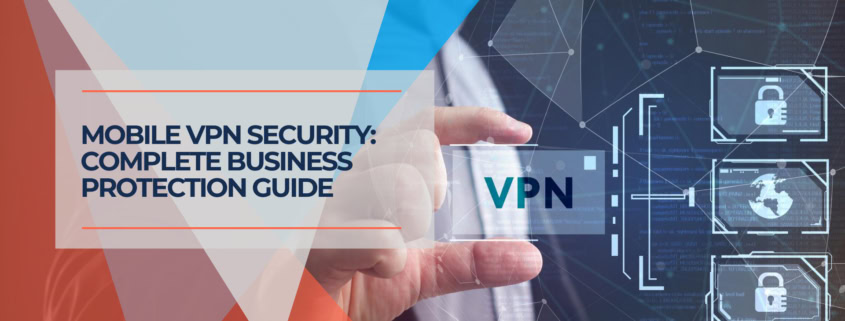
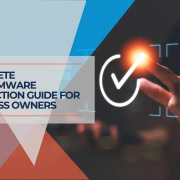


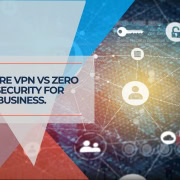


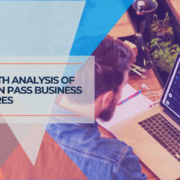
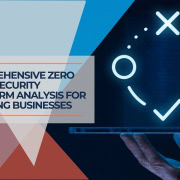


Leave a Reply
Want to join the discussion?Feel free to contribute!